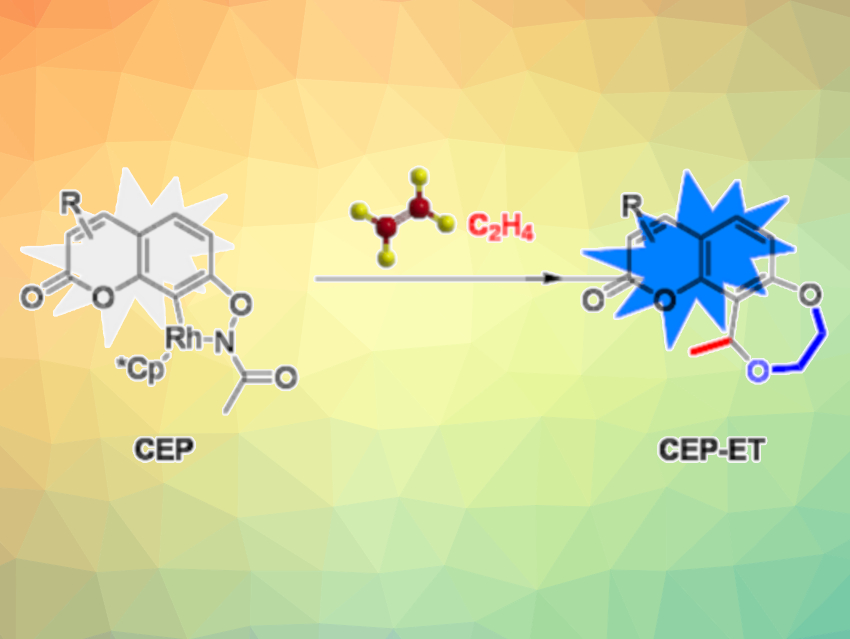Ethylene is an important gaseous plant hormone involved in a variety of physiological activities in plants. Existing methods for ethylene detection, such as gas chromatography, usually suffer from high costs or the inability to monitor ethylene in real time.
Yonghao Ye, Nanjing Agricultural University, China, and colleagues have developed fluorophore-tagged Rh(III)-based fluorogenic probes (coumarin-ethylene probes, CEPs) that react sensitively to ethylene (example pictured). In this type of probe, a Rh(III) metal catalyst acts as a quencher, binding coumarin and forming the nonfluorescent CEP. Then, a hydrocarbon activation reaction between the CEP and ethylene removes the quenching Rh and forms CEP-ET. This results in an observable fluorescence “turn-on” of coumarin (pictured on the right).
The best-performing CEP provides a limit of detection of 52 ppb for ethylene gas. Confocal microscopy imaging showed that it can be used to detect ethylene in CHO-K1 cells (a Chinese hamster ovary cell line), as well as in tobacco and Arabidopsis thaliana (thale cress) plants. The probe could be useful for exploring the regulation of ethylene biosynthesis and ethylene signal transduction in biological systems.
- An Activity‐Based Sensing Fluorogenic Probe for Monitoring Ethylene in Living Cells and Plants,
Yiliang Chen, Wei Yan, Duojing Guo, Yu Li, Ji Li, Hao Liu, Lirong Wei, Na Yu, Biao Wang, Ying Zheng, Maofeng Jing, Jing Zhao, Yong-Hao Ye,
Angew. Chem. Int. Ed. 2021.
https://doi.org/10.1002/anie.202108335




